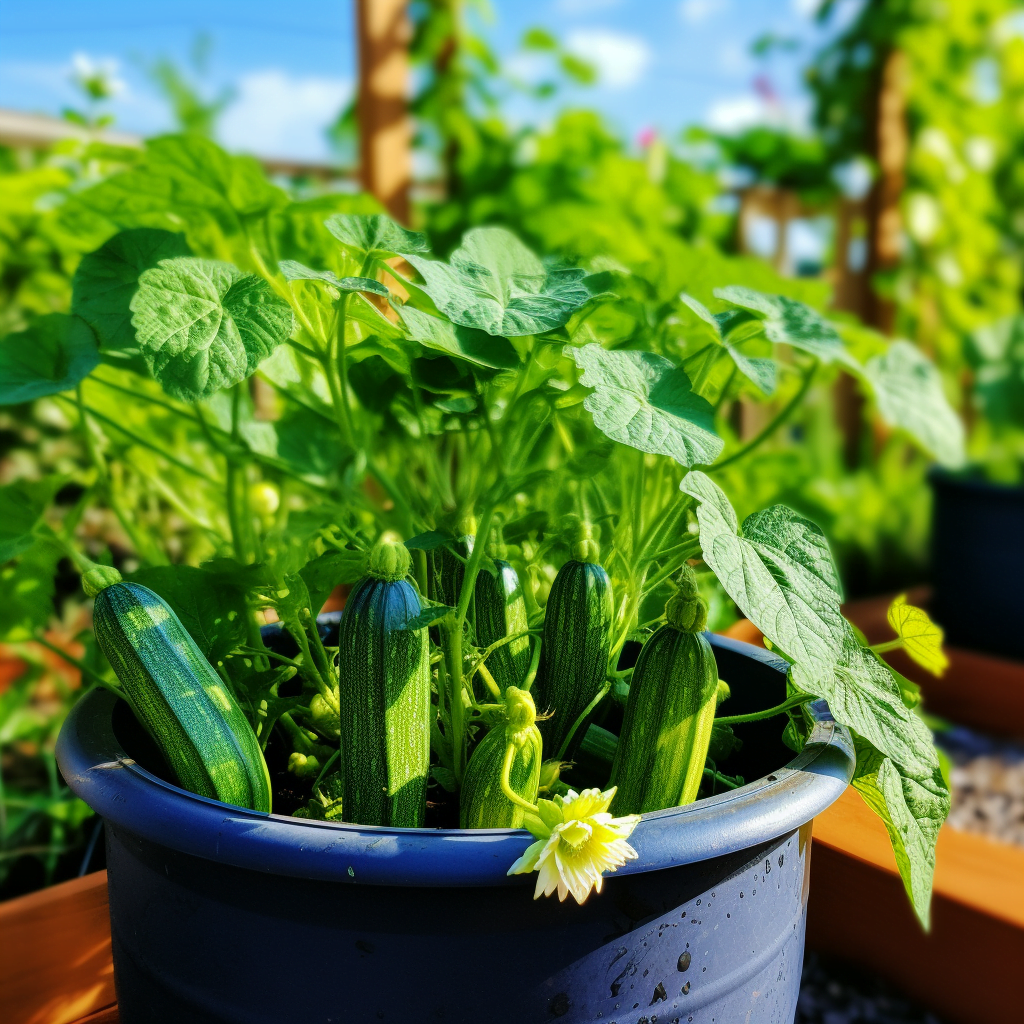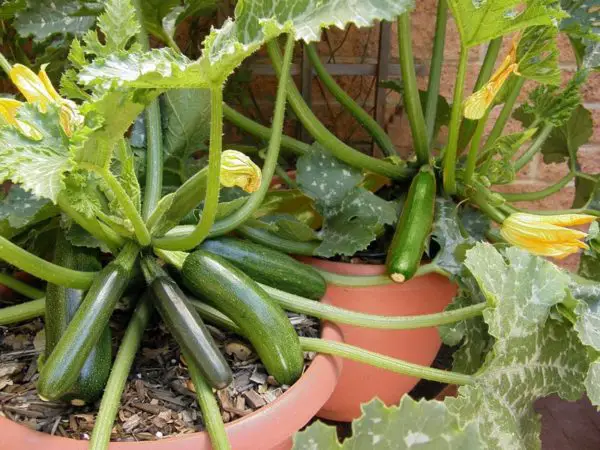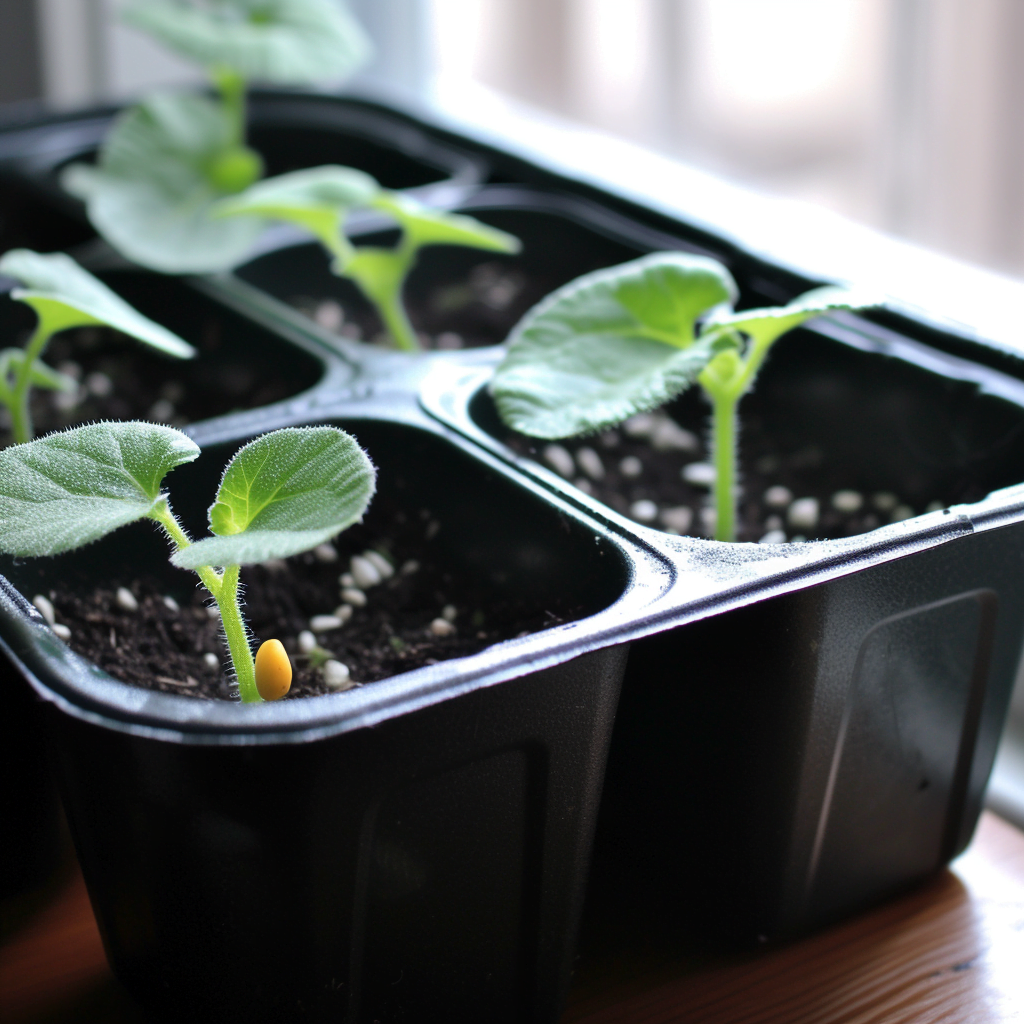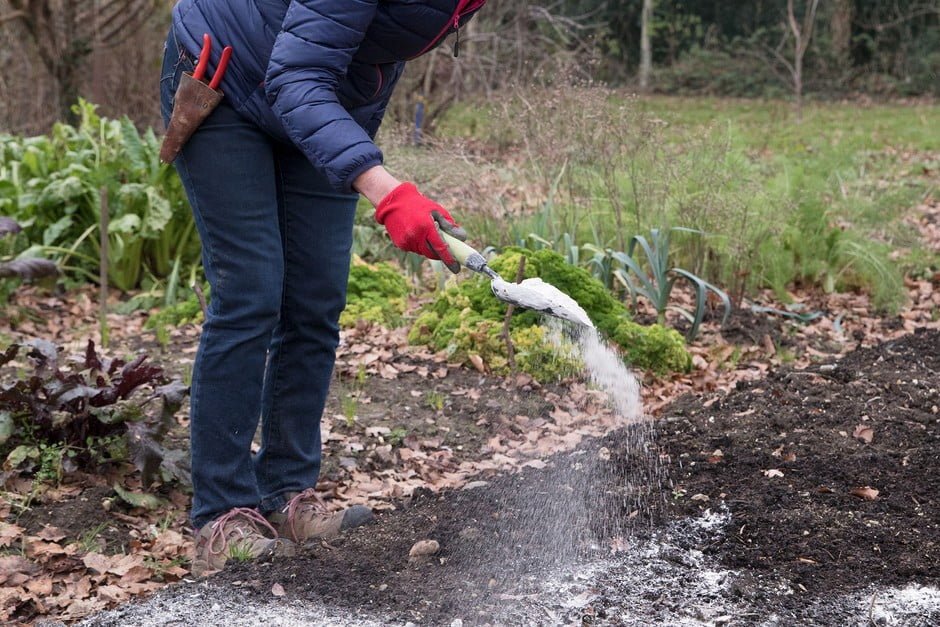Introduction
Gardening doesn’t have to be limited to sprawling backyards or community plots. Even the most confined spaces can burst with life, color, and taste. One of the most rewarding plants to grow in containers is zucchini. This popular garden vegetable is not only nutritious and versatile in cooking but also surprisingly easy to grow in pots. This article will guide you through the best way to grow zucchini in a pot, turning your patio, balcony, or windowsill into a bountiful garden.
Zucchini (Cucurbita pepo) is a summer squash that belongs to the Cucurbitaceae family, which also includes cucumbers, melons, and pumpkins. It is a fast-growing and prolific plant that thrives in warm weather. With the right care and attention, you can enjoy a plentiful harvest of this delicious vegetable throughout the summer months.
Best Zucchini Varieties for Container Gardening
Choosing the right zucchini variety can make a significant difference in your gardening experience. While all zucchinis can grow in containers, some are better suited for it than others. Vining varieties, for example, can become quite large and may require more space and trellising for support. On the other hand, bush varieties are more compact and ideal for pot gardening. Here are some recommended varieties for container gardens:
- Astia: This bush variety is perfect for containers, producing an abundance of small, flavorful zucchinis. It is known for its compact growth habit, making it suitable for small spaces.
- Black Beauty Heirloom: A classic variety that produces dark green fruits with a rich, nutty flavor. It is well-suited for container gardening due to its compact size.
- Buckingham Patio: Specifically bred for container gardening, this variety produces yellow zucchinis with a delicate flavor. It is a compact plant that thrives in pots.
- Emerald Delight: Resistant to powdery mildew, a common zucchini disease, this variety produces glossy green fruits. It is an excellent choice for container gardens.
- Max’s Gold: This variety stands out with its golden yellow fruits and compact growth habit. It is well-suited for small containers and patio gardens.
- Patty Pan: With its unique round and scalloped fruits, Patty Pan zucchini adds visual interest to your container garden. It is a compact variety that performs well in pots.
- Crookneck: An heirloom variety that produces curved yellow fruits with a buttery flavor. It is a compact plant that can thrive in containers.
Choosing the Right Pot and Soil for Your Zucchini
Zucchinis are heavy feeders and need plenty of room to grow. Choose a pot that’s at least 18 inches in diameter and 12 inches deep. The pot should have ample drainage holes to prevent waterlogging, which can lead to root rot.
When it comes to soil, opt for a high-quality potting mix. Garden soil is too heavy and can contain weed seeds and disease organisms. A good potting mix is light, drains well, and contains enough organic matter to hold nutrients and moisture. Some potting soils also come with slow-release fertilizers, which can provide your zucchini with nutrients throughout the growing season.
To ensure proper drainage, place a layer of gravel or broken pottery shards at the bottom of the pot before adding the potting mix. This will prevent water from pooling at the bottom and promote healthy root growth.
The Planting Process: From Seed to Sprout
You can start zucchinis from seeds or buy young plants from a nursery. If starting from seeds, plant them 1 inch deep in the potting soil. Plant two seeds per pot and thin to the strongest seedling once they have two sets of true leaves. The best time to plant zucchini seeds is in the late spring when the soil has warmed up to at least 70°F.
If you’re using young plants, plant them at the same depth they were growing in their nursery pot. Be gentle when handling the plants to avoid damaging their roots.
Zucchinis thrive in warm temperatures, so it’s important to wait until all danger of frost has passed before planting them outdoors. If you live in a cooler climate, you can start the seeds indoors a few weeks before the last frost date and transplant the seedlings into containers once the weather warms up.
To promote healthy growth, provide your zucchini plants with full sun exposure. Place the pots in a location that receives at least 6 to 8 hours of direct sunlight each day. If you’re growing zucchini indoors, place the pots near a sunny window or use artificial grow lights to provide adequate light.

Caring for Your Zucchini Plant
Zucchinis need regular care and attention to thrive in containers. Here are some essential care tips for your zucchini plant:
Watering:
Zucchinis require consistent moisture to grow and produce healthy fruits. Water your zucchini regularly, keeping the soil consistently moist but not waterlogged. A good rule of thumb is to water when the top inch of soil feels dry to the touch. Avoid overhead watering, as wet leaves can encourage the development of fungal diseases. Instead, water at the base of the plant to deliver moisture directly to the roots.
Fertilization:
Zucchinis are heavy feeders and benefit from regular fertilization. Start by incorporating a slow-release granular fertilizer into the potting mix at the time of planting. This will provide a steady supply of nutrients to the plant throughout the growing season. Additionally, you can supplement with liquid fertilizer every two weeks to ensure your zucchini plants have access to essential nutrients. Look for a balanced vegetable fertilizer and follow the package instructions for the correct dosage.
Sunlight:
Zucchinis thrive in full sun, so it’s important to provide them with ample sunlight. Place your pots in a sunny spot and rotate them every few days to ensure all sides of the plant receive equal exposure to the sun. If you’re growing zucchini indoors, place the pots near a south-facing window or use artificial grow lights to provide at least 6 to 8 hours of direct sunlight each day.
Trellising:
If you’re growing a vining variety of zucchini, providing support for the vines is essential. As the plants grow, they will produce long, sprawling vines that can take up a significant amount of space. To save space and encourage vertical growth, you can insert a trellis or stake into the pot and gently tie the vines to it with soft garden twine. This will help keep the plant upright and prevent it from sprawling across your garden.
Pollination:
Zucchinis rely on pollination to produce fruits. In their natural environment, bees and other pollinators transfer pollen from the male flowers to the female flowers, enabling fruit development. In a container garden, pollination can sometimes be a challenge. To ensure successful pollination, you can hand-pollinate your zucchini plants. Identify the male flowers (which have a long, slender stem) and gently brush their stamens against the center of the female flowers (which have a small, swollen fruit at the base). This will transfer the pollen and increase the chances of fruit set.
Frost Protection:
Zucchinis are sensitive to frost and cold temperatures. If you live in an area with a short growing season or occasional late spring frosts, it’s important to protect your zucchini plants. Cover the plants with a frost blanket or bring them indoors overnight when temperatures drop below 50°F. Frost can damage the leaves and flowers, affecting fruit production.
Common Pests, Diseases, and Solutions
Like any plant, zucchinis can be affected by pests and diseases. Common pests that can attack zucchini plants include squash bugs, aphids, cucumber beetles, and vine borers. These pests can cause damage to the leaves, stems, and fruits of the plants, leading to reduced yields. Regularly inspect your plants for signs of pest infestation, such as chewed leaves, wilting, or yellowing foliage.
To control pests, you can use organic insecticides or employ natural methods such as handpicking and introducing beneficial insects like ladybugs and lacewings. Additionally, practicing good garden hygiene by removing plant debris and weeds can help reduce pest populations.
Zucchinis are also susceptible to certain diseases, including powdery mildew, bacterial wilt, and blossom end rot. Powdery mildew appears as a white, powdery coating on the leaves and can be controlled by improving air circulation, avoiding overhead watering, and applying fungicidal sprays if necessary. Bacterial wilt causes wilting and yellowing of the leaves and can be managed by removing and destroying infected plants. Blossom end rot is characterized by dark, sunken spots on the blossom end of the fruit and is caused by calcium deficiency or inconsistent watering. To prevent blossom end rot, maintain consistent soil moisture and ensure proper calcium levels in the soil.
Regularly monitoring your zucchini plants for signs of pests and diseases and taking appropriate action can help keep your plants healthy and productive.
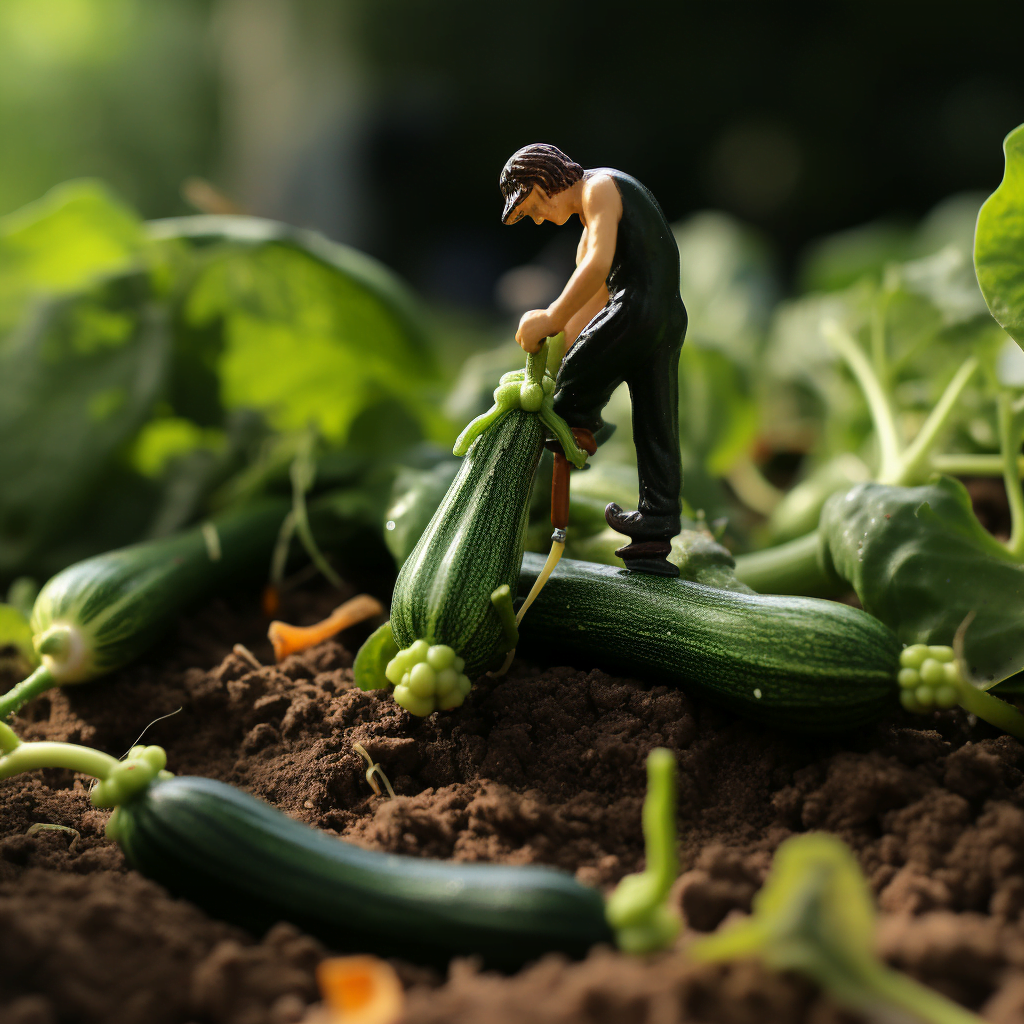
Harvesting Your Zucchini
One of the joys of growing zucchini is the satisfaction of harvesting your own fresh produce. Zucchinis are usually ready to harvest when they are about 6 to 8 inches long and have a glossy skin. However, you can harvest them at any size you prefer. Smaller fruits are often more tender and flavorful, while larger ones are great for stuffing or grilling.
To harvest, simply cut the zucchini off the plant with a sharp knife or garden shears. Be careful not to damage the plant or nearby fruits during the process. Regular harvesting is essential to encourage continuous fruit production. Leaving overripe or oversized zucchinis on the plant can signal to the plant that its job is done, and it may stop producing new fruits.
Using Your Harvest: Simple and Delicious Zucchini Recipes
Now comes the fun part: eating your home-grown zucchini! Zucchini is an incredibly versatile vegetable that can be used in a variety of dishes. Its mild flavor and tender texture make it a favorite ingredient in both savory and sweet recipes. Here are a few simple and delicious zucchini recipes to inspire your culinary adventures:
1. Grilled Zucchini:
Grilling zucchini brings out its natural sweetness and adds a smoky charred flavor. Simply slice your zucchini lengthwise into 1/4-inch-thick strips, brush with olive oil, sprinkle with salt and pepper, and grill for a few minutes on each side until tender and lightly charred. Serve as a side dish or use as a topping for burgers and sandwiches.
2. Zucchini Noodles with Pesto:
Zucchini noodles, also known as “zoodles,” are a healthy and low-carb alternative to traditional pasta. Use a spiralizer or a julienne peeler to create long, thin strands of zucchini. Sauté the zoodles in a pan with a little olive oil until tender. Toss with your favorite pesto sauce, sprinkle with grated Parmesan cheese, and garnish with fresh basil leaves. This light and flavorful dish is perfect for a quick and satisfying meal.
3. Stuffed Zucchini Boats:
Zucchini boats make for an impressive and delicious appetizer or main course. Cut your zucchini in half lengthwise and scoop out the flesh, leaving a hollow “boat” shape. In a separate bowl, mix together cooked quinoa, sautéed vegetables, and your choice of protein (such as ground meat or tofu). Season with herbs and spices, then spoon the filling into the zucchini boats. Bake in the oven at 375°F for 20-25 minutes or until the zucchini is tender and the filling is cooked through. Top with shredded cheese and broil for an additional 2-3 minutes until golden and bubbly.
4. Chocolate Zucchini Bread:
Zucchini adds moisture and tenderness to baked goods, making it a perfect addition to homemade bread. This chocolate zucchini bread is a delightful treat that combines the richness of chocolate with the goodness of zucchini. In a mixing bowl, combine grated zucchini, cocoa powder, flour, sugar, eggs, oil, and a dash of vanilla extract. Mix until well combined, then fold in chocolate chips or nuts if desired. Pour the batter into a greased loaf pan and bake at 350°F for 50-60 minutes, or until a toothpick inserted into the center comes out clean. Allow the bread to cool before slicing and enjoying a slice of moist and chocolaty goodness.
These are just a few examples of the many ways you can incorporate zucchini into your meals. Feel free to experiment with different recipes and cooking methods to make the most of your home-grown zucchinis.
Conclusion
Growing zucchini in a pot is a rewarding and enjoyable activity that anyone can do. It’s a great way to enjoy fresh produce even if you don’t have a lot of space. With the tips and advice in this article, you’ll be well on your way to a bountiful zucchini harvest. Remember to choose the right zucchini variety for your container, provide adequate sunlight, water and fertilize regularly, and protect your plants from pests and diseases. And don’t forget to savor the fruits of your labor by trying out delicious zucchini recipes. Happy gardening and bon appétit!
We’d love to hear about your gardening adventures and zucchini-growing experiences! If you have any questions, tips, or favorite zucchini recipes, please leave a comment below. And don’t forget to check out our other gardening articles for more tips and advice. Happy gardening and happy cooking!
